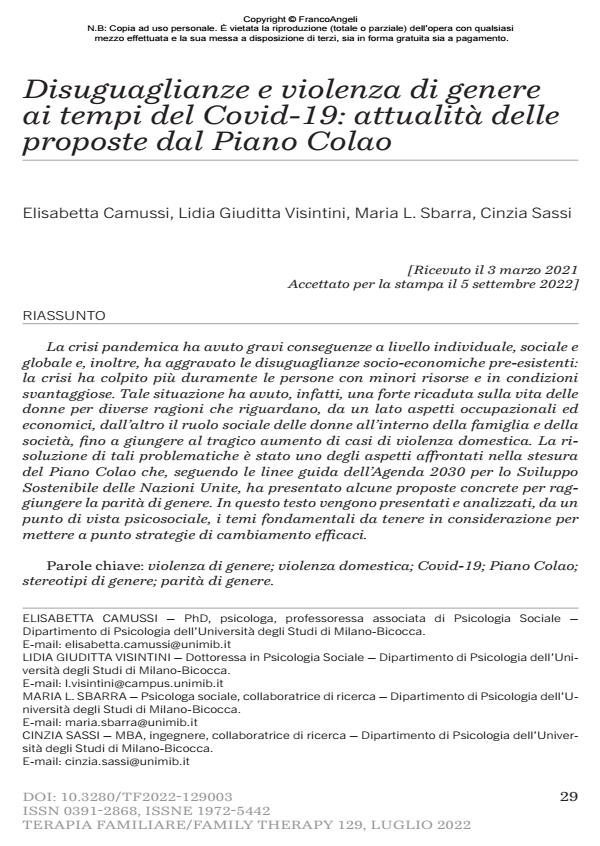Social inequalities and gender-based violence during Covid-19: topicality of proposals from the Colao Plan
Journal title TERAPIA FAMILIARE
Author/s Elisabetta Camussi, Lidia Giuditta Visintini, Maria L. Sbarra, Cinzia Sassi
Publishing Year 2022 Issue 2022/129
Language Italian Pages 22 P. 29-50 File size 735 KB
DOI 10.3280/TF2022-129003
DOI is like a bar code for intellectual property: to have more infomation
click here
Below, you can see the article first page
If you want to buy this article in PDF format, you can do it, following the instructions to buy download credits

FrancoAngeli is member of Publishers International Linking Association, Inc (PILA), a not-for-profit association which run the CrossRef service enabling links to and from online scholarly content.
The pandemic crisis had serious consequences on an individual, social and global level. Moreover, it has exacerbated the pre-existing socio-economic inequalities: people with limited resources and living in disadvantageous conditions have been hit the hardest by the effects of the crisis. This situation had, in fact, a strong impact on women’s lives for various reasons concerning, on the one hand, employment and economic aspects, on the other, the social role of women within the family and in society, up to the tragic increase in cases of domestic violence. Among the aspects addressed by the Colao Plan was the resolution of these issues, which presented some specific proposals for achieving gender equality based on the 2030 Agenda for Sustainable Development of the United Nations. In this pa- per, we present and analyze, from a psychosocial perspective, the fundamental themes to consider when developing effective change strategies.
Keywords: gender-based violence; domestic violence; Covid-19; Colao Plan; gender stereotypes; gender equality.
Elisabetta Camussi, Lidia Giuditta Visintini, Maria L. Sbarra, Cinzia Sassi, Disuguaglianze e violenza di genere ai tempi del Covid-19: attualità delle proposte dal Piano Colao in "TERAPIA FAMILIARE" 129/2022, pp 29-50, DOI: 10.3280/TF2022-129003